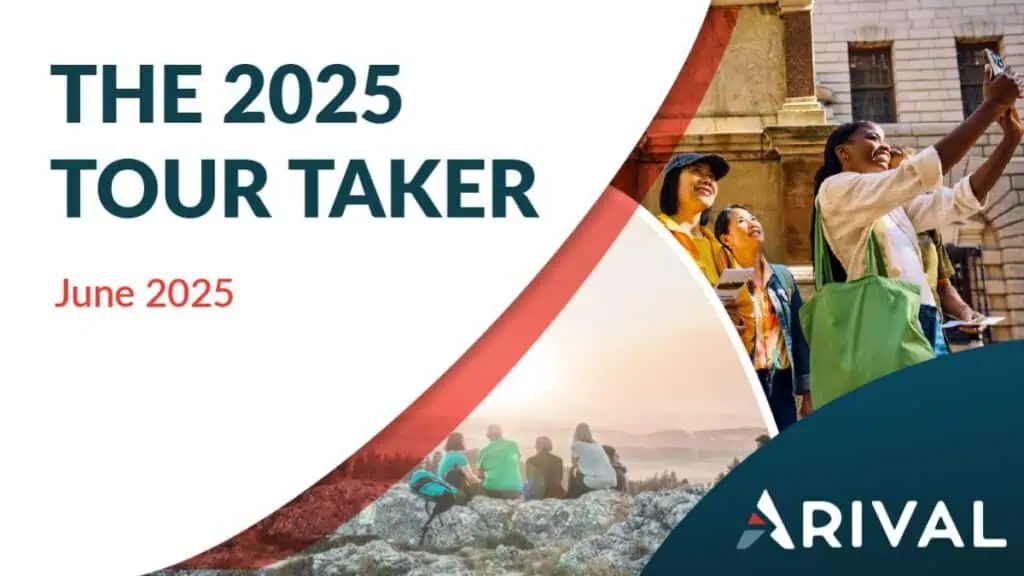Editor’s note (Jan. 23, 2023): Some of the information in this article may be outdated. Arival has been keeping close track of changes and updates with Google Things to do. See here for the latest on Google.
Key Takeaways for Operators
- A new module features more tour and multi-attraction pass listings associated with key attractions and points of interest
- The listings are currently free and are only on mobile, so far
- The listings are in a tile format and feature more information
- In a series of select attraction searches, the overwhelming majority of listings we found were from OTAs, but a Google spokesperson said all connected operators and OTAs are eligible
- Google is choosing what to display and in what order, in part, based on popularity and content quality.
- Operators whose tours feature attractions and points of interest need to ensure their connection to Google Things To Do supports the content requirements for the new module. It will be competitive.
- If you are not connected but want to learn more, see this list of partners helping operators connect to Google Things To Do
Google is on the march in tours and attractions.
The search engine has quietly released an Experiences module, a next big step in Things To Do. The new module appears in search below an attraction listing and features tours, attraction passes and other ways to experience an attraction or point of interest.
Google Things To Do is the display of ticket prices with links to the website of attractions, OTAs (online travel agencies) and other booking partners directly in the attraction’s Google business listing. The first screen on the left in the image below shows ticket prices and links to booking options for the San Diego Zoo.
The second screenshot, in the middle, shows the Experiences module. This module appears below the business listing of the attraction, and it currently appears only on mobile devices.
Experiences for the San Diego Zoo features four listings from OTAs offering different attraction passes that include the zoo. Clicking on one of the tile listings opens a pop-up window with further information about the pass and a link to the partner website. Three of the first four listings are from one OTA — GetYourGuide.
Cleaning up Google Listings
One objective of the new module, according to one technology partner that helps connect attractions to their Google listing and has been briefed by Google, is to improve all of the different ticket listing options for many attractions.
One of the early criticisms of Google Things To Do is that some attractions would have a dozen or more ticket listings, including audio tours, private tours, VIP and other package experiences, and multi-attraction passes as well as just the individual tickets. This would show a wide range of pricing but without any information to differentiate the listings. We covered this issue here when Things To Do first launched.
27-29 April 2026
Insider Pro Access Members Save 20%
THE event of the year for the European in-destination experiences industry
Get Your Super Early Bird Ticket Today!|
The Experiences module, with the new tile format, shows a lot more information: a thumbnail image, product title, review score and number of reviews in addition to the price and partner.
“Tour and activity operators in Google’s universe needed a clear distinction from attractions in Things To Do,” said Steve Martinez, founder and chief commercial officer of LIVN, one of several connectivity partners with Google Things To Do. “The Experiences module offers an expanded platform for operators to display their products with pricing, images, descriptions, and a link to their website. They can also list their products against several points of interests, allowing them to become more discoverable on Google.”
Google has also added an “official site” label on the free direct link to the attraction website. This is a change from the previous “in-person tickets” label when Things To Do was first introduced. The “in-person” label was confusing because the term is also used to refer to purchasing tickets offline, literally in person at a ticket office or kiosk.
Mostly OTAs, for Now
The images above from the Experiences module for the San Diego Zoo only show listings from OTAs. In several searches across multiple attractions, we found only one tour operator whose listings were featured in the Experiences module.
A Google spokesperson told Arival that “all partners, including operators and OTAs, are eligible to appear”. In prior beta releases, OTAs have usually been the first listings to appear because they already have more complete connections to Google. It has taken longer to get complete integrations with the many reservation systems and connectivity providers that are powering the operators’ direct listings.
“This section is now available for any and all experiences. It will be competitive though,” said Christian Watts, CEO of Magpie Travel, also a connectivity partner for Things To Do. “The OTAs are currently dominating these listings because they are sending quality information.”
Another partner, speaking off the record, expressed some frustration about lack of visibility into the sort order of the Experiences module. The sort order defines what listings get displayed first, second, third and so on. The sort order for the main Things To Do listings in the attraction business listing (see the first image on the left in the San Diego Zoo example above), price drives the order of listings.
However, in the Experiences module, such as in the example below from the Musee d’Orsay in Paris, the order does not necessarily appear to be driven by some of the obvious criteria, such as price, ranking or number of reviews.
When asked about what drives the order for the new module, a Google spokesperson said: “Results are ranked based on several factors, but mainly by popularity and content quality.” Of course, how Google measures popularity and quality is unclear.
Reservations Systems, Operator Listings Need to Compete
Google has said in the past that one goal of Things To Do is to provide equitable representation across the industry, meaning that operators as well as OTAs and other distributors would be able to connect and offer free listings.
As Google expands listing options with more content to display, they will want to show the listings that drive the most engagement. For operator direct listings to compete with OTAs, they will need to work with reservation systems or connectivity partners to make their listings competitive. Google should provide some guidance to all their partners to help them improve their listing quality.
Arival offers regularly scheduled online seminars for Arival Insder Pro members to help operators understand and become more competitive on Google Things To Do. Our next online seminar is 6 April
Insider Pros — log in to your dashboard and click here to learn about the Google Things To Do seminar
Become an Insider Pro Access member today and get access to the full library of Arival research, plus many other benefits such as free consulting sessions, special discounts and 20% off in-person events, starting from $179 per year.
Sign up to receive insights tailored for the in-destination industry as well as updates on Arival.

















